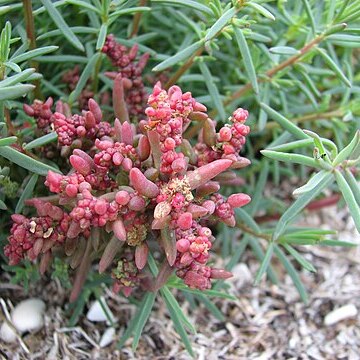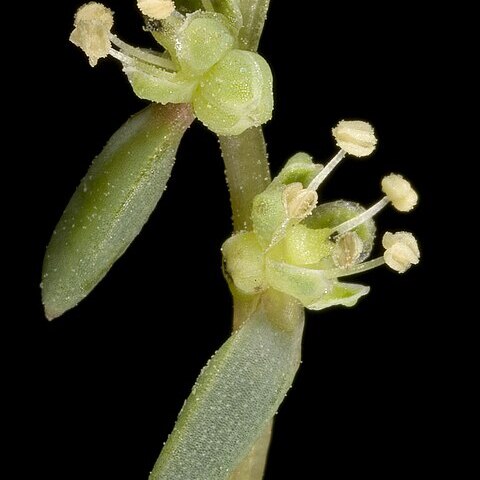Rounded perennial branching from base, glabrous. Leaves slender and semiterete, c. 30 mm long, to thick and fusiform, c. 10 mm long, acute or obtuse, succulent, without a pellucid margin. Flowers bisexual, in axillary clusters. Fruiting perianth divided to near base, depressed-spherical, c. 3 mm diam.; lobes succulent, rounded on back; ovary free, depressed-globular, passing into a stout style, c. 0.5 mm long; stigmas 2 or 3, slender. Seed horizontal, lenticular, c. 1 mm diam.; testa smooth, glossy, reddish brown; perisperm slight on upper and lower side of embryo.
A small succulent shrub. It grows 20-50 cm tall. It is woody at the base. It can be upright or spreading. The leaves are fleshy and green. They are 1-3 cm long by 2 mm wide. Older stems and leaves can be pink, red or purple. The leaves can be opposite or alternate. The upper leaves are smaller. The flowers are small and green. They are 3 mm across. The flowers are rounded and there are several together at the base of the uppermost leaves.


